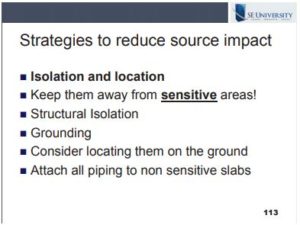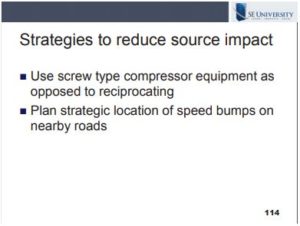Avoiding Problematic Vibrations
Have you been involved in the remediation of a building experiencing vibration issues? Do you consider vibrations during your structural analysis to ensure the building occupants will feel comfortable in the structure? ASCE 7 explicitly states that “Structural systems, and members thereof, shall be designed to have adequate stiffness to limit deflections, lateral drift, vibration, or any other deformations that adversely affect the intended use and performance of buildings and other structures.” Vibration is an important serviceability issue, and since vibration effects on humans can be subjective, it can sometimes be difficult to foresee.
In the March 2019 SEU session, Geoff Blumber and Ravi Ozarker, PE, P.Eng., from Hexagon PPM, presented Avoiding Vibration Issues in Your Structure. During the session, Geoff explored the types of vibration and vibration sources which should be considered during design, and Ravi examined several strategies for improving dynamic analysis results using structural software, ways to avoid vibration issues during design, and remediation methods.
Ravi stressed that the best way to avoid vibration issues is identifying potential sources of vibration early in the planning phase and then plan strategies to reduce their impact on the structure. Most importantly, he offered the rule of thumb that the mass of the supporting structure be 3 times the mass of vibrating machinery to reduce potential vibration issues. He also offered several helpful tips to reducing source impact as shown on the following slides:
In existing structures, remediation may be complex to reduce any existing vibration issues. Ravi suggested a thorough vibration analysis of the existing structure, and then a new analysis including any potential remediation methods to be sure your proposal will reduce vibrations. Before more expensive damping-type solutions are explored, Ravi suggested increasing the stiffness of the structure to dampen vibrations or increasing the mass to dissipate vibrations. Some solutions included using ceiling hangers, floating floors, or neoprene pads or spring isolators for problematic equipment.
As structures become more and more optimized and floor layouts span longer and are lighter than previous floors, vibrations will continue to be problematic. With early planning and proper structural analysis, vibrations issues can be avoided, thus pleasing our clients and building owners.




There are no comments yet, but you can be the first